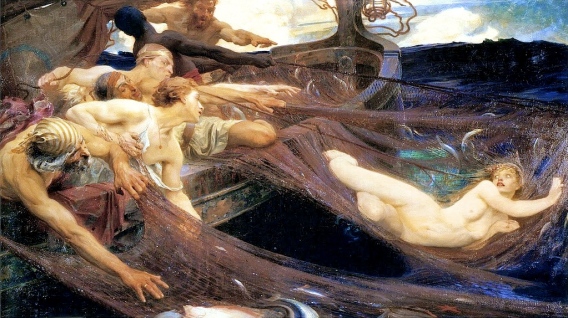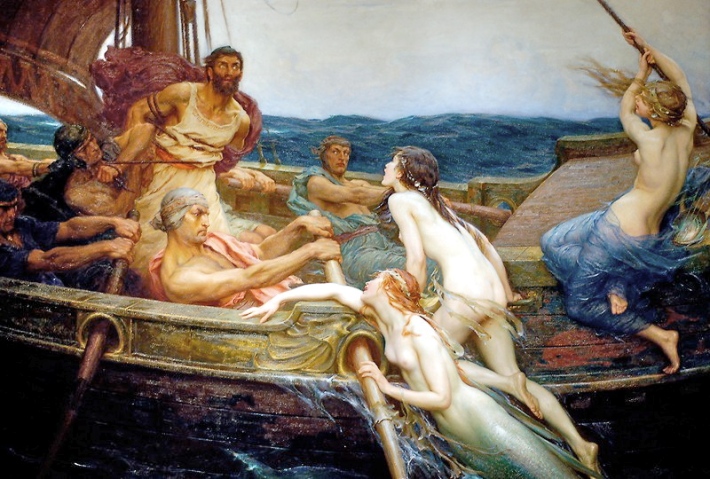In Greek mythology, the Sirens were dangerous creatures, portrayed as femmes fatales who lured nearby sailors with their enchanting music and voices to shipwreck on the rocky coast of their island.
Roman poets Virgil and Ovid located them on a group of three small islands called Sirenum scopuli, while others such as the Greek poets Hesiod and Apollonius placed them on the “flowery” island of Anthemoessa.
In The Odyssey, Homer said they lived somewhere between Aeaea and the rock of Scylla.
Although they lured mariners, for the Greeks the Sirens in their “meadow starred with flowers” were not sea deities. Roman writers linked the Sirens more closely to the ocean, as daughters of the sea god Phorcys.
 Their number is variously reported as between two and five.
Their number is variously reported as between two and five.
The Sirens of Greek mythology are sometimes portrayed in later folklore as fully aquatic and mermaid-like.
The fact that in Spanish, French, Italian, Polish, Romanian and Portuguese the word for mermaid is respectively Sirena, Sirène, Sirena, Syrena, Sirenã and Sereia, and that in biology the Sirenia comprise an order of fully aquatic mammals that includes the dugong and manatee, add to the visual confusion, so that Sirens are often represented as mermaids.
However, “the sirens, though they sing to mariners, are not sea-maidens,” according to the British classical scholar and feminist Jane Ellen Harrison (1850-1928), “they dwell on an island in a flowery meadow.”
Harrison’s lifetime straddled that of Herbert James Draper (1863-1920), the English Classicist painter, two of whose works are shown here: Ulysses and the Sirens, above top; and, above right, The Sea Maiden.
Via Wikipedia.
